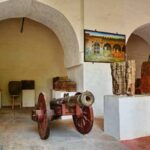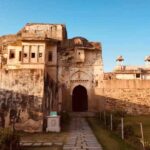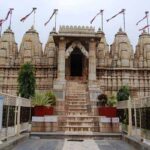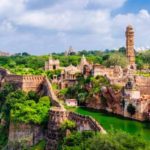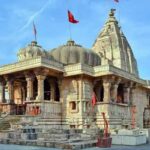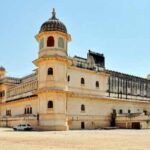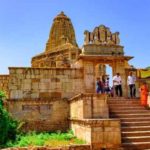Chittorgarh Travel Information, located in the state of Rajasthan, India, is a city steeped in history and rich cultural heritage. With its magnificent forts, grand palaces, and awe-inspiring architecture, Chittorgarh attracts tourists from all around the world. Let’s explore some of the key attractions that make Chittorgarh a must-visit destination.
The Chittorgarh Fort, a UNESCO World Heritage Site, is the crown jewel of the city. Spread over an area of 700 acres, this massive fortress stands tall on a hilltop, offering breathtaking views of the surrounding landscape. The fort is known for its impressive architecture, intricate carvings, and historical significance. It houses several palaces, temples, and towers, including the famous Vijay Stambh (Tower of Victory) and Kirti Stambh (Tower of Fame), which are must-see attractions for history enthusiasts.
Another significant attraction in Chittorgarh is the Rana Kumbha Palace. This grand palace was the residence of the Rajput rulers and is known for its exquisite architecture. The palace is a testimony to the valor and grandeur of the Rajput dynasty. Visitors can explore its intricately designed rooms, courtyards, and balconies while immersing themselves in the rich history of the region Chittorgarh Tour Packages.
The Meera Temple, dedicated to the legendary poet-saint Meera Bai, is another popular site in Chittorgarh. The temple is known for its beautiful carvings and peaceful ambiance. It holds immense religious and cultural importance for the locals and is a place of pilgrimage for devotees of Meera Bai.
Chittorgarh Attractions also boasts several other temples, such as the Kalika Mata Temple, Jain temples, and the Samadhisvara Temple, which are known for their architectural brilliance and religious significance.
For nature lovers, Chittorgarh offers the picturesque Gaumukh Reservoir and the Bassi Wildlife Sanctuary. The Gaumukh Reservoir is a serene lake surrounded by hills and lush greenery, making it an ideal spot for picnics and boat rides. The Bassi Wildlife Sanctuary, on the other hand, is home to a variety of flora and fauna, including deer, antelopes, and migratory birds, providing nature enthusiasts with a unique experience.
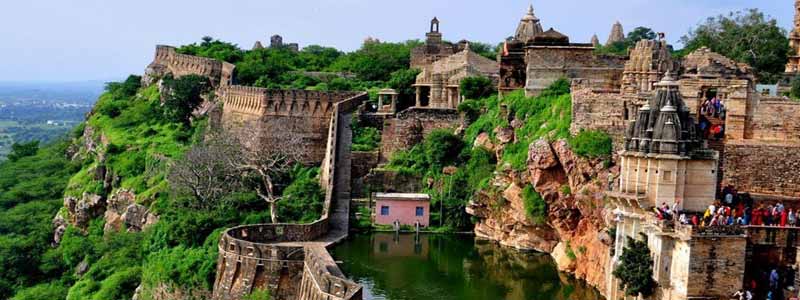
History of Chittorgarh
The history of Chittorgarh is deeply intertwined with the rich tapestry of Rajasthan’s Rajputana heritage. The city, located in the present-day state of Rajasthan, India, has witnessed numerous battles, conquests, and acts of valor over the centuries. Let’s delve into the captivating history of Chittorgarh.
Chittorgarh Tourism traces its origins back to the 7th century when it was established by the Maurya dynasty. However, it gained prominence under the rule of the Sisodia Rajputs in the 8th century. The city became the capital of the Mewar kingdom, which would go on to play a significant role in the region’s history.
One of the defining moments in the history of Chittorgarh is the Siege of Chittorgarh in 1303 by Alauddin Khilji, the Sultan of Delhi. The brave resistance of the Rajput warriors, led by King Ratan Singh and Queen Padmini, against the vastly superior forces of Khilji is legendary. The women of Chittorgarh performed the act of “jauhar,” a self-immolation to avoid capture and dishonor. The siege remains a symbol of Rajput valor and sacrifice.
Chittorgarh continued to be a symbol of Rajput pride and resistance against foreign invasions. The city witnessed subsequent sieges and battles, including attacks by Bahadur Shah of Gujarat in the 16th century and Emperor Akbar of the Mughal Empire in the late 16th century. Despite facing repeated invasions, the spirit of Chittorgarh remained unyielding.
The Mewar kingdom and Chittorgarh regained their glory under the reign of Maharana Kumbha in the 15th century. He transformed Chittorgarh into a center of art, literature, and architecture. The construction of majestic forts, palaces, and temples, including the iconic Chittorgarh Fort and Vijay Stambh (Tower of Victory), were undertaken during his reign.
Chittorgarh also played a pivotal role in the history of the Mughal Empire. Maharana Udai Singh II, who ruled in the 16th century, shifted the capital from Chittorgarh to Udaipur, marking the beginning of a new era. Udaipur became the center of power for the Mewar kingdom, while Chittorgarh retained its historical and cultural significance.
In subsequent centuries, Chittorgarh witnessed periods of peace and prosperity under the Rajput rulers, but it also faced challenges from rival Rajput clans and external forces. The city gradually transitioned from being a political capital to a cultural and historical symbol of the Rajputana legacy.
Today, Chittorgarh stands as a testament to the indomitable spirit of Rajput valor and the grandeur of its historical past. Its forts, palaces, and temples continue to attract visitors, who come to immerse themselves in the rich history and cultural heritage of this magnificent city.
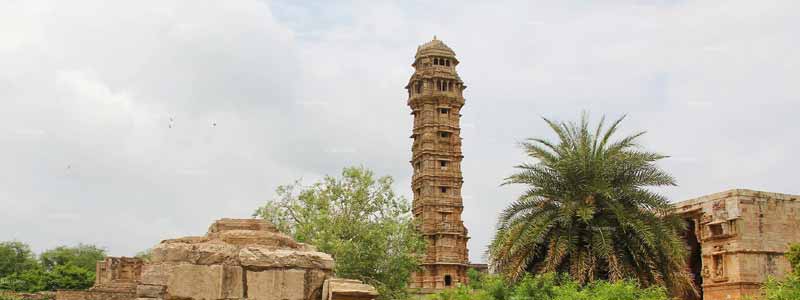
Places to Visit in Chittorgarh
Chittorgarh, with its rich historical heritage, offers several captivating attractions for visitors. Here are some of the must-visit places in Chittorgarh:
Chittorgarh Fort: The grand Chittorgarh Fort is the most iconic landmark of the city. Explore its massive complex that houses palaces, temples, and towers, including the Vijay Stambh (Tower of Victory) and Kirti Stambh (Tower of Fame).
Rana Kumbha Palace: This palace within the fort complex is known for its splendid architecture and historical significance. Admire the intricate designs, spacious courtyards, and beautiful balconies as you delve into the grandeur of the Rajput era.
Meera Temple: Dedicated to the poet-saint Meera Bai, this temple is a serene and spiritual place. Experience the peaceful ambiance and admire the intricate carvings that depict the life and devotion of Meera Bai.
Kalika Mata Temple: Situated near the fort, this ancient temple is dedicated to the goddess Kali. The temple’s architecture and religious significance make it a popular spot for devotees and tourists.
Samadhisvara Temple: Known for its exquisite architecture, this temple is dedicated to Lord Shiva. Marvel at the intricate carvings and the peaceful atmosphere of this ancient place of worship.
Gaumukh Reservoir: Located at the base of the fort, this reservoir is a man-made lake fed by a spring emerging from a rock in the shape of a cow’s mouth (gaumukh). Enjoy boating or simply relax amidst the picturesque surroundings.
Bassi Wildlife Sanctuary: Nature lovers can visit this sanctuary, which is home to diverse flora and fauna. Spot various wildlife species, including deer, antelopes, and numerous bird species, in their natural habitat.
Padmini’s Palace: Explore the remains of the legendary Padmini’s Palace, associated with the captivating tale of Queen Padmini. The palace offers a glimpse into the royal lifestyle and architectural splendor of the bygone era.
Vijay Stambh (Tower of Victory): Built by Maharana Kumbha to commemorate his victory over the Sultan of Malwa, this 9-story tower is a remarkable architectural masterpiece. Climb to the top for a panoramic view of the surrounding area.
Kirti Stambh (Tower of Fame): This tower is adorned with intricate Jain sculptures and is dedicated to the first Jain Tirthankara, Adinatha. The tower’s beauty and religious significance make it a significant attraction for Jain devotees and history enthusiasts.
These are just a few highlights of the attractions that Chittorgarh has to offer. Exploring these sites will provide a fascinating glimpse into the rich history, culture, and architectural brilliance of this enchanting city.
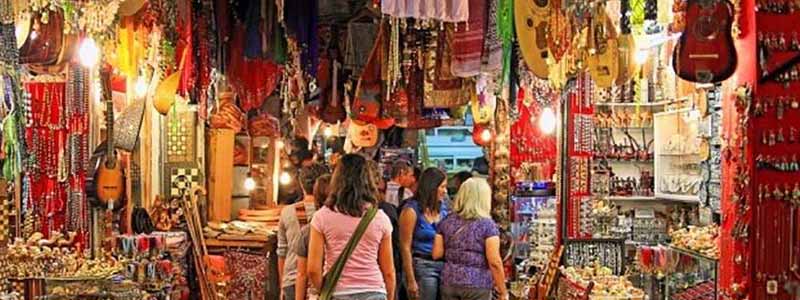
Famous Shopping Markets in Chittorgarh
Chittorgarh offers a unique shopping experience with its vibrant markets that showcase the local handicrafts, textiles, and traditional Rajasthani items. Here are some of the famous shopping markets in Chittorgarh:
Rana Sanga Market: Located near the Chittorgarh Fort, Rana Sanga Market is a bustling hub for shopping. Here, you can find a wide range of Rajasthani handicrafts, including pottery, metalwork, textiles, and colorful traditional clothes. It’s a great place to pick up souvenirs and traditional items.
Sadar Bazaar: Situated in the heart of the city, Sadar Bazaar is a popular market that offers a mix of local products and everyday essentials. From clothing and accessories to household items and street food, you can find a variety of items at reasonable prices.
Rana Pratap Market: This market is known for its traditional Rajasthani textiles and fabrics. You can find a vibrant collection of Bandhani sarees, lehengas, and dupattas with intricate designs and vibrant colors. It’s a paradise for textile lovers.
Gandhi Chowk: Located near the city center, Gandhi Chowk is a bustling market where you can explore a range of items like textiles, handicrafts, footwear, and accessories. It’s a great place to shop for traditional Rajasthani clothing and unique local artifacts.
Tower Chowk: Tower Chowk is another vibrant market known for its traditional Rajasthani crafts and textiles. It’s a great place to buy colorful turbans (pagdis), embroidered fabrics, handicrafts, and lac jewelry. You can also find a variety of Rajasthani snacks and sweets here.
Mochi Bazaar: This market is renowned for its footwear, particularly traditional Rajasthani mojaris (embroidered leather shoes). You can find a wide variety of intricately designed mojaris in different colors and styles.
Kumbha Bazaar: Located near the Kumbha Palace, this market offers a mix of local handicrafts, textiles, and Rajasthani artifacts. It’s a great place to buy Rajasthani paintings, wooden crafts, and traditional jewelry.
Johari Bazaar: Johari Bazaar is famous for its exquisite Rajasthani jewelry. From Kundan and Meenakari work to silver and gemstone jewelry, you can find a stunning collection of traditional Rajasthani ornaments here.
These markets in Chittorgarh provide a wonderful opportunity to explore and shop for authentic Rajasthani items and immerse yourself in the local culture. Remember to bargain and enjoy the vibrant ambiance while indulging in a memorable shopping experience.
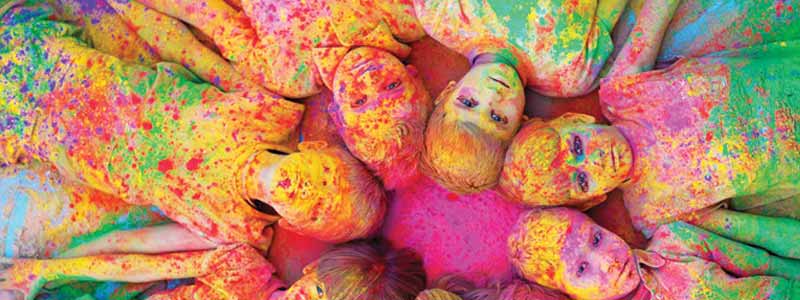
Festivals of Chittorgarh
Chittorgarh celebrates a range of colorful and vibrant festivals throughout the year, which provide a glimpse into the rich cultural heritage of Rajasthan. Here are some of the major festivals celebrated in Chittorgarh:
Meera Mahotsav: Meera Mahotsav is an annual festival celebrated in honor of the legendary poet-saint, Meera Bai. It takes place in the month of March and is a grand celebration of Meera Bai’s devotion to Lord Krishna. The festival features music and dance performances, bhajans (devotional songs), and reenactments of Meera Bai’s life. Artists from across the country gather in Chittorgarh to pay tribute to this iconic figure of Rajasthan.
Teej: Teej is a prominent festival celebrated by women in Chittorgarh. It usually falls during the monsoon season (July-August). Women dress up in colorful traditional attire, apply henna (mehndi), and participate in processions. They swing on beautifully adorned swings, sing folk songs, and perform traditional dances. Teej symbolizes the love and devotion between Lord Shiva and Goddess Parvati.
Gangaur: Gangaur is another important festival celebrated with great enthusiasm in Chittorgarh. It is dedicated to Goddess Gauri, an incarnation of Goddess Parvati, and Lord Shiva. The festival spans over several days and involves women adorning themselves with traditional attire and jewelry. They carry colorful idols of the deities in a procession, accompanied by music and dance. The festival showcases the rich cultural heritage and marital bliss of Rajasthan.
Navratri and Durga Puja: Navratri, a nine-night festival dedicated to the worship of Goddess Durga, is celebrated with great fervor in Chittorgarh. The city comes alive with vibrant decorations, traditional dances like Garba and Dandiya, and devotional music. People observe fasts and visit various temples, including the Kalika Mata Temple, to seek blessings during this auspicious period.
Holi: Holi, the festival of colors, is celebrated with great joy and enthusiasm in Chittorgarh, like in other parts of India. People come together to play with vibrant colors, dance to traditional music, and indulge in festive delicacies. The celebration of Holi in Chittorgarh adds a unique Rajasthani flavor to this lively festival.
Diwali: Diwali, the festival of lights, is celebrated with great enthusiasm in Chittorgarh. The city is adorned with decorative lights, and people light diyas (oil lamps) to symbolize the triumph of light over darkness. The festival is accompanied by fireworks, exchange of sweets, and elaborate family gatherings. The grandeur of Diwali in Chittorgarh adds a touch of splendor to the city.
These festivals of Chittorgarh reflect the vibrant culture, deep-rooted traditions, and strong religious beliefs of the people. They provide a wonderful opportunity for visitors to witness the rich cultural tapestry and experience the joyous celebrations of Rajasthan.
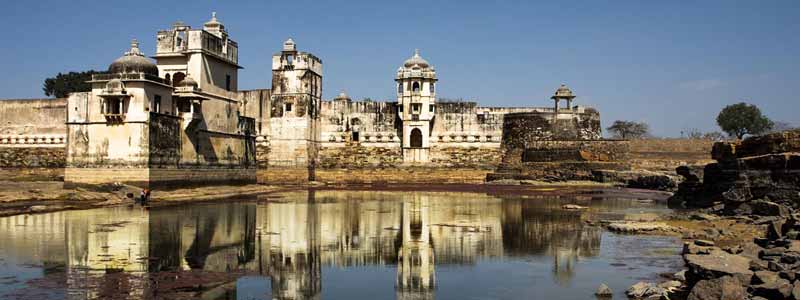
Best Time to Visit Chittorgarh
The best time to visit Chittorgarh is during the winter season, which spans from October to March. During this time, the weather in Chittorgarh is pleasant and ideal for exploring the historical sites and outdoor attractions. The temperature ranges from around 10°C (50°F) to 25°C (77°F), making it comfortable for sightseeing and outdoor activities.
Here’s a breakdown of the seasons and their characteristics in Chittorgarh:
Winter (October to March): The winter season is the most favorable time to visit Chittorgarh. The weather is cool and pleasant, with mild days and chilly nights. It is the peak tourist season, so expect more crowds. It’s advisable to carry light woolens during the evenings and early mornings.
Summer (April to June): Summers in Chittorgarh are hot and dry, with temperatures ranging from 25°C (77°F) to 45°C (113°F). The scorching heat during the daytime makes outdoor activities uncomfortable. If you do visit during this season, it’s important to carry sunscreen, hats, and stay hydrated.
Monsoon (July to September): Chittorgarh experiences moderate rainfall during the monsoon season. The weather is relatively cooler, but the region receives occasional heavy showers. While the rain can add a unique charm to the landscape, it can also disrupt outdoor plans and make some attractions inaccessible. If you don’t mind the rain, this season can offer a quieter and greener experience.
Considering the overall weather conditions and the peak tourist season, the months of October, November, February, and March are generally considered the best time to visit Chittorgarh. During these months, you can enjoy pleasant weather, clear skies, and participate in festivals like Teej and Meera Mahotsav.
It’s always a good idea to check the local weather forecasts and plan your visit accordingly to ensure a comfortable and enjoyable trip to Chittorgarh.
How to Reach Chittorgarh
Chittorgarh is well-connected to major cities in Rajasthan and other parts of India. Here are the different modes of transportation you can use to reach Chittorgarh:
By Air: The nearest airport to Chittorgarh is Maharana Pratap Airport, also known as Udaipur Airport, located in Udaipur, approximately 90 kilometers away. Several domestic airlines operate regular flights to Udaipur from major cities like Delhi, Mumbai, Jaipur, and Ahmedabad. From the airport, you can hire a taxi or take a bus to reach Chittorgarh.
By Train: Chittorgarh has its own railway station, Chittorgarh Junction, which is well-connected to major cities in India. Several trains, including express and superfast trains, run to and from Chittorgarh. It is connected to cities like Delhi, Mumbai, Jaipur, Ahmedabad, Kolkata, and more. From the railway station, you can easily find taxis, auto-rickshaws, or local transport to reach your destination within the city.
By Road: Chittorgarh has good road connectivity, and you can reach the city by bus or private vehicle. National Highway 48 (NH 48) passes through Chittorgarh, connecting it to major cities like Jaipur, Udaipur, Ajmer, and Ahmedabad. State-run buses as well as private buses operate regular services to and from Chittorgarh. You can also hire taxis or self-drive to reach the city.
Within the city, local transportation options include auto-rickshaws, cycle-rickshaws, and taxis. These are easily available and can be used for moving around the city and visiting various tourist attractions.
It’s advisable to plan your journey in advance and check the schedules of flights, trains, or buses to ensure a smooth and convenient travel experience to Chittorgarh.

